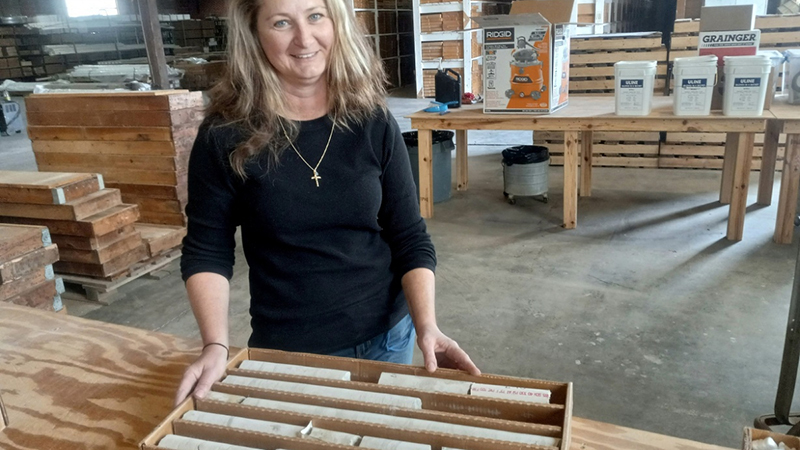
by Geitner Simmons | IANR Communications
Michele Waszgis looks down at the boxes of rock samples positioned neatly on a table. She points and explains. “Basically, these are puzzle pieces from underneath the ground,” she says.
Her words unlock mysteries many millions of years old — mysteries from Nebraska’s deep past.
Those wavy lines undulating in a piece of limestone? Those, she explains, are the geologic effects from sea life in Nebraska’s long-ago past, when a shallow sea stretched across much of interior North America.
Those curious sparkling effects in a blue-black-gray igneous rock? Those are components of what’s called the Elk Creek carbonite, a geologic anomaly the Conservation and Survey Division (CSD) discovered in Nebraska’s Johnson County. The rock formed millions of years ago and contains niobium and other rare earth elements.
Niobium is a critical mineral primarily used in alloys to strengthen steel and is also used in components of cellphones, batteries, medical equipment and green energy. The company NioCorp recently began clearing property in Elk Creek, Nebraska, in preparation for a niobium mine.
As Waszgis explains the CSD repository’s wide range of materials, she is standing in a massive storage facility dating from the World War II era near Mead, Nebraska. In the 1940s, the brick and wood-frame structure, with formidable concrete floors two feet thick, manufactured munitions for the U.S. arsenal against the Axis powers. These days, the building is one of five facilities for the CSD Geological Sample Repository and holds thousands of drilling cores and other geological samples.
Follow the entire article and view more images:
More details at: https://ianrnews.unl.edu/repository-s-range-puzzle-pieces-explain-nebraska-s-geologic-past